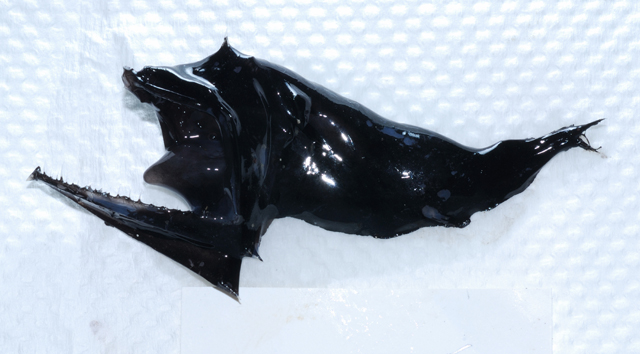| Oneirodidae (Dreamers) |
|
|
bathypelagic; depth range 400 - 2100 m |
| Pacific Ocean: Eastern Central Pacific (Ref. 40966); western and central Pacific, including South Pacific (Ref. 86949). |
|
Dorsal soft rays (total): 5-5; Anal soft rays: 5-5. Metamorphosed females distinguished by having an extremely large oblique mouth; elements of upper and lower jaws extending posteriorly far beyond the base of the pectoral fin and opercular opening; vomerine teeth present or absent; well developed sphenotic spines; well-developed symphisial spine on lower jaw; elongate and tapering angular, forming long narrow spine; hypomandibula with two heads; small quadrate spine, however, longer than articular spine; deeply notched posterior margin of opercle; short and broad subopercle, dorsal end rounded, ventral end nearly circular; toothless pharyngobranchial II; caudal fin lacking internal pigmentation; extremely short illicium, almost totally enveloped by tissue of esca in smaller specimens; well developed first ray of dorsal fin; dorsal fin rays 5; anal fin rays 5; short and broad pectoral fin lobe, shorter than longest rays of pectoral fin; pectoral fin rays 18-20; skin naked, lacking dermal spinules; darkly pigmented skin of caudal peduncle extends well past base of caudal fin (Ref. 86949). |
|
|
Not Evaluated
(Ref. 96402)
|
| harmless |
|
Source and more info: www.fishbase.org. For personal, classroom, and other internal use only. Not for publication.
Page created by Jen, 05.08.02,
php script by kbanasihan 06/09/2010 ,
last modified by
dsantos, 20/08/10

